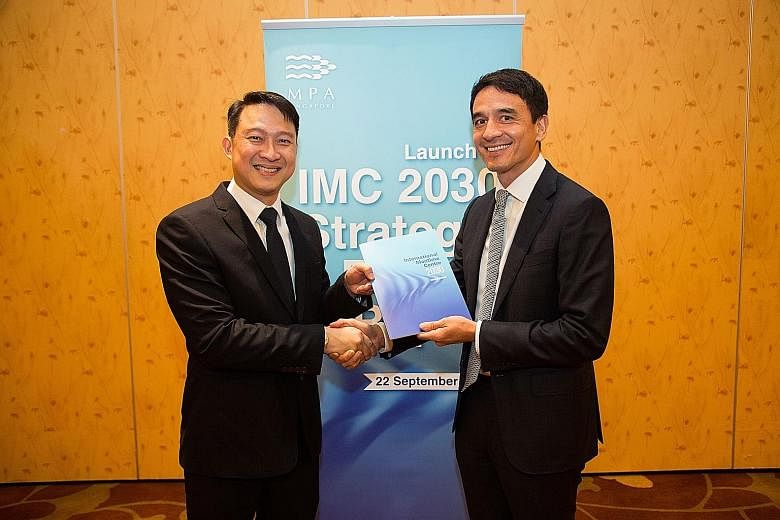Singapore has built up its reputation as a bustling international maritime hub over the past decades, but it now has a new detailed road map to chart the next phrase of growth.
The aim, as laid out by the International Maritime Centre (IMC) 2030 Advisory Committee in its report, is for Singapore to become the global maritime hub for connectivity, innovation and talent.
The Maritime and Port Authority of Singapore (MPA) had set up the advisory committee in August last year to chart the direction of Singapore as a maritime hub.
The committee said Singapore should further widen and deepen its IMC cluster by harnessing both physical and non-physical trade flows.
Singapore will need to strengthen interlinkages within the Singapore IMC cluster by further entrenching maritime players here and broadening the depth and range of activities, including possible co-location of existing and new maritime-related ones.
It will also have to strengthen links with adjacent industries such as commodity trading, logistics and e-commerce, as well as with other complementary international maritime clusters, through stronger business ties, collaborations on research and development, training and education, and development of new international standards and regulations.
Innovation should also remain a key focus of Singapore's IMC, said the committee.
-
IMC 2030: FIVE KEY STRATEGIES
-
1 Expand and deepen the maritime cluster
• Continue to grow the number of shipping players
• Capture more market share in shipbroking sectors
• Advance Singapore's standing as an Asian insurance and maritime legal and arbitration hub
• Expand the sources of financing and attract new players
• Strengthen Singapore's port and develop opportunities related to the port ecosystem
2 Strengthen interlinkages and network effects
• Promote physical clusters of maritime-related activities within Singapore
• Enhance interlinkages between Singapore's maritime cluster and adjacent industries, such as logistics and commodity trading
• Strengthen interlinkages with other international maritime clusters
3 Develop a vibrant maritime innovation ecosystem and promote digitalisation
• Build a robust maritime cluster centred on strong alignment of innovation and research and development efforts between public and private sectors
• Promote digitalisation of the maritime industry leveraging big data, Internet of Things and intelligent systems
4 Develop a multi-skilled maritime workforce with a global mindset
• Strengthen quality of maritime education and training
• Further enhance standards of professionalism of the maritime industry
• Raise profile of the industry to attract talent
5 Establish Singapore as a global maritime standard bearer
• Position Singapore as a leader in existing and new areas of excellence, such as port management, risk management, and safety, security and sustainability
• Promote a regulatory environment that supports new innovation and standards
This will enable the development of future capabilities and solutions that build on emerging technologies, such as autonomous systems, robotics, data analytics and artificial intelligence.
At the same time, talent remains a critical success factor, and the sector, known collectively as Maritime Singapore, will need to continue building a future-ready workforce with relevant skills and a global mindset that anticipates the future needs of the industry, it said.
These recommendations were unveiled yesterday at the Singapore Shipping Association's 32nd anniversary gala dinner at Marina Bay Sands.
Committee chairman Andreas Sohmen-Pao told a briefing earlier this week that it was timely to review Maritime Singapore's growth strategy to stay relevant amid changing global trends.
This is especially as the industry continues to face significant headwinds, such as slowing growth and changing trade patterns, accelerating technological change and disruption, as well as growing competition from other maritime centres.
He acknowledged that there is only so much Singapore can do in terms of "hardware" or infrastructure, which is why it must continue to build on its "software".
"There is a lot of capital, a lot of infrastructure developments in the region, and how do we stay ahead? It is by capturing some of these softer aspects like innovation, talent and connectivity," he said.
Senior Minister of State for Transport Lam Pin Min, who was at the event, noted that the report is a call for Maritime Singapore to take bold steps to embrace technology and innovation, invest in developing people, and seek new ventures in a more connected world.
Dr Lam also said that the Government will study the recommendations and work with the industry to implement them.


